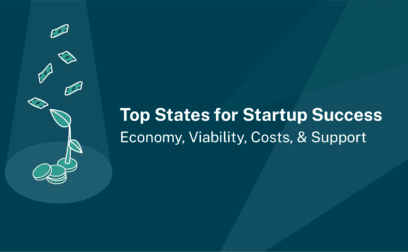Before you apply for an SBA loan, you need to know which program you want to apply for. These programs all have different requirements and support different business needs. You must apply specifically for a loan in the program you wish to apply for – there’s not a blanket SBA application that works for all of them.
Different programs are better for different types of businesses. For instance, the SBA microloan program and start-up loans will be better for newer businesses, but they provide less funding. The bigger loan programs, such as the SBA 7(a) and SBA 504/CDC loan programs, can provide a larger lump sum of money, but may have to be used for specific purposes.
SBA 7(a) loans
The most popular loan program the SBA administer is the SBA 7(a) program. You can get up to $5 million for your business with an SBA 7(a) loan, and can use it for a variety of purposes, including real estate, buying equipment or inventory, adding to your working capital or even to refinance existing debt.
For an SBA 7(a) loan over $50,000, the interest rate is tied to the WSJ Prime rate plus 2.75%. While the WSJ Prime rate may fluctuate, you can generally get an SBA 7(a) loan for an interest rate of 8-13% or less. The repayment rate depends on how much money you get and what you’re using it for, but can be as high as 25 years.
SBA export loans are another type of SBA 7(a) loan.
SBA express loans
The SBA express loans program falls under the SBA 7(a) umbrella. There’s one major difference between an express loan and a regular 7(a) loan: decisions on loan approval are made within 36 hours. An express loan is also typically for a much smaller sum of money, usually $350,000 or less, but with similar repayment terms and interest rates.
SBA 504/CDC loans
The SBA 504/CDC loan program is similar to the SBA 7(a) program, but has some stricter requirements on how you can use the funds. Most notably, you can only use an SBA 504/CDC loan for fixed assets – generally real estate or equipment. They’re often called SBA real estate loans, because purchasing or fixing up commercial real estate is the most common purpose of an SBA 504/CDC loan. Other requirements include that the business be able to prove that it will use the fund to create jobs, grow the local economy or otherwise support the local community.
The structure of an SBA 504/CDC loan is different from an SBA 7(a) loan in how it’s funded as well: 40% of the loan is financed by a Certified Development Company (CDC) approved by the SBA, an SBA-approved lender finances 50% and the borrower provides the remaining 10% as collateral.
You can get up to $5.5 million from an SBA 504/CDC loan, depending on your reason for getting the loan. Interest rates are similar to those of an SBA 7(a) loan, with repayment terms up to 25 years.
SBA microloans
With a funding cap of $50,000, SBA microloans are popular for smaller, newer businesses that may not qualify for some of the SBA’s larger programs due to their time in business. Unlike other SBA loan programs, the approved lenders in the microloan program are community-based non-profit organizations.
Although the amount you get for an SBA microloan may be small, they’re very flexible in terms of what they can be used for, including buying inventory, equipment or working capital. They tend to have interest rates of 8-13% and the maximum repayment terms are six years. However, they also tend to have more relaxed qualifying terms for borrowers, which makes them easier to get for startups.
SBA disaster loans
When a major economic disaster strikes the U.S. (such as during the COVID-19 pandemic), the SBA will offer its disaster loan program. This is a rare loan type that the SBA manages directly, making loans to businesses directly affected by a declared disaster. The type of loan available will depend on the type and location of the disaster, but a business can expect to get as much as $2 million with an interest rate of 4%. The repayment terms for these loans are also typically very agreeable – up to 30 years for some. In some cases, the government may even forgive disaster loans altogether for qualifying businesses.
Additional SBA programs
The SBA also offers additional programs that you may consider, especially if you don’t qualify for the bigger loan programs. For instance, a SBA line of credit may provide a more flexible option for you, or you may find that you qualify for the SBA Community Advantage program. The SBA also offers investment and grant opportunities to small businesses.






 yet? Register here!
yet? Register here!